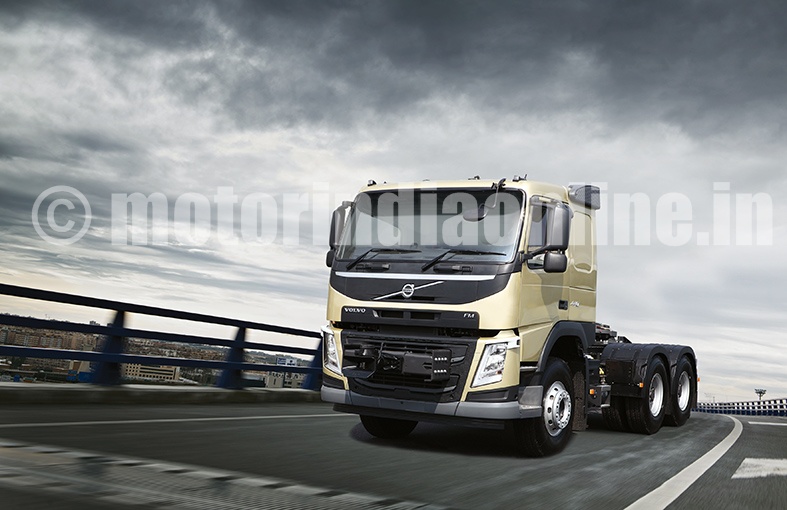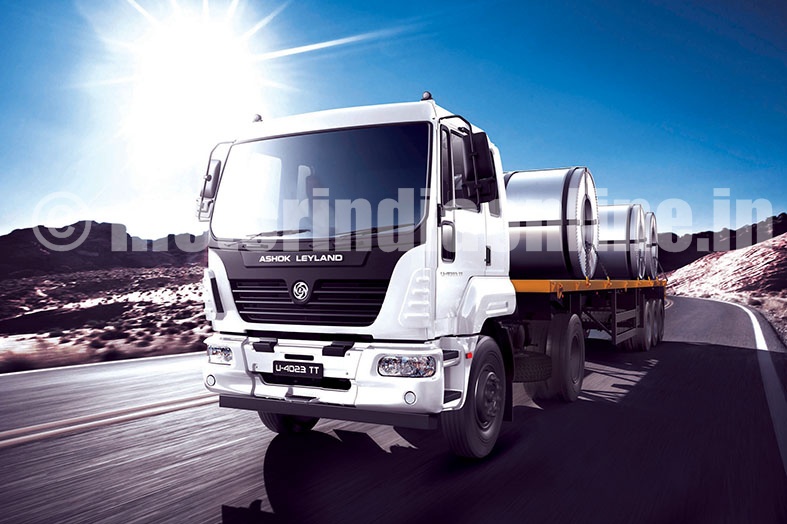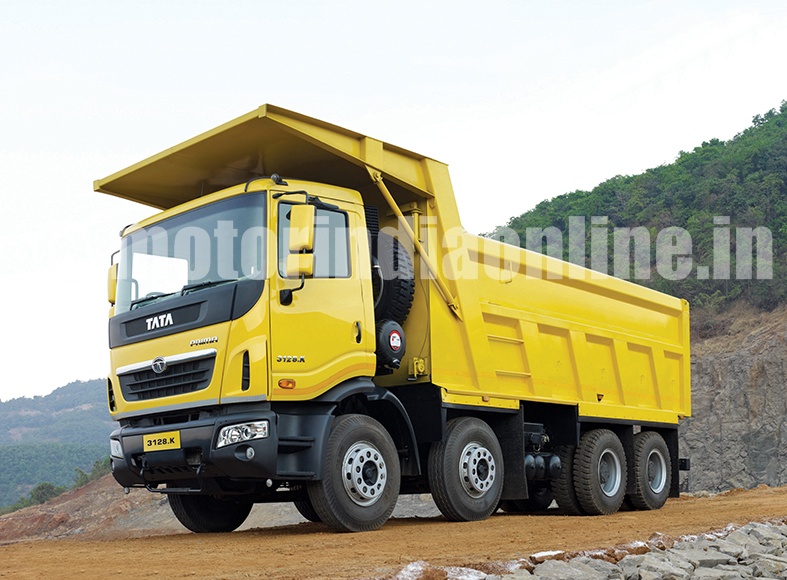And roar it shall, sooner than later! Given the promise of an upward trend in the last two fiscal years and the Indian medium and heavy commercial vehicle segment is keeping its fingers crossed for the trend to continue in the current financial year as well. But industry experts do foresee challenges that can slow down the upward mobility.
The Indian auto sector, especially the M&HCV segment, has emerged as a prominent exporter during April 2015-January 2016 with a growth of 18.36 per cent compared to the same period last year. But in terms of manufacturing, the total of 19.84 million vehicles rolled out during April 2015-January 2016, including commercial and passenger vehicles, is merely a marginal improvement from the 19.64 million during the same period a year earlier. While the overall domestic sales of CVs increased by 9.43 per cent during the period as against the same period last year, the M&HCV segment saw an increase in sales of 30.19 per cent.
The auto sector has benefited from FDI worth $14.32 billion from 2000 to 2015. Of this, major investments went into passenger car and two-wheeler segments, bolstering confidence. According to experts like Angel Broking and Frost & Sullivan, the surge in volumes in the industry of 17-20 per cent, specifically for the M&HCV segment, will be due to the lifting of the ban on mining, improvement in freight rates, ease of cash crunch among transporters and the green signal given to a few infrastructure projects. Also the positive sign of the proposed privatization of select STUs in the bus segment has helped, although the STUs themselves are balking at the prospect, as was witnessed at the recent two-day conference of the Association of State Road Transport Corporations (ASRTU) in Bengaluru.

The incentive
Reports from research firms say that India is emerging a high quality low-cost manufacturing hub. Increase in labour rates in China is helping India surge ahead. Also aiding the industry are policies like JNNURM and removal of around 125 toll plazas, which will give a tremendous boost to the sector. The tipper segment, the reports say, may witness a double-digit growth due to the revival of mining and infrastructure projects.
On its part, the concerned Ministry has offered the much-needed fillip to the industry in the form of:
- Encouraging foreign investments in the auto sector
- Allowing 100 per cent FDI under the automatic route
- Making automobile manufacturing the main driver of ‘Make In India’ initiative
- Intending to form a separate transport department by the Ministry of Road Transport & Highways (MORTH) to take care of issues such as exports and fuel technology besides fuel emissions
- Formulating a scheme for faster adoption and manufacturing of electric and hybrid vehicles under the National Electric Mobility Mission 2020
- Aiming to boost the sector towards sustainable growth through the Automobile Mission Plan (AMP) and the Regulatory Framework under MORTH
What makes the mood more upbeat is the fact that the prices of crude oil and diesel have come down substantially in the international market, as reflected in the profitability of fleet operators which, in turn, will boost volume growth further.

Cash flow improvement owing to a relative increase in freight rates has helped fleet operators. A report from ICRA in March 2015 says: “Fleet operators based in the Northern and Western markets suggest that fleet utilization levels are gradually improving due to higher load availability from some of the key freight generating sectors such as automobiles, cement and other general industries.” In the same year ICRA did caution the sector that “the demand for tippers is likely to remain subdued in view of delays in pick-up in mining activities in the affected States and sizeable idle capacity.”
Secondly, the subdued trend in re-sale values of second-hand vehicles, apart from ageing of the existing fleet, suggests that demand recovery is yet to gain momentum. The see-sawing hangs in the air even now to some extent.
The road ahead
Demand for new CVs is also bound to be driven by factors like advance trucking platforms, progression to BS IV and V stages, the latter by 2017, besides accepting technologies like ABS are all bound to offer the fleet operators opportunities to place orders for new vehicles.
Said Mr. Sushil Rathi, COO, Mahindra Logistics: “The competition in the CV market seems to have increased in the last few years. The market has seen a couple of new OEMs entering while the existing ones have entered new segments and expanded their sales/service networks. In the M&HCV, the new entrants have brought with them the global experience and strong brand equity. However, in the same category, the incumbents have raised the entry barriers by further strengthening their good rapport with fleet owners and increasing their product portfolio and have improved the sales/service network which are proving to be a challenge for the MNCs to make a dent.”
He echoes the general sentiment of the industry that the introduction of GST will ensure an increase in transportation activity, with its positive impact on the M&HCV sector. Further, he adds: “The rise in the rural and semi-urban India as growth/consumption drivers, besides increased urbanization levels, will ultimately give the sector the much-needed boost.”
Experts like Angel Broking say that the earnings momentum might continue for auto giants like Ashok Leyland with “discounts going down, realization stabilizing and volumes picking up.”
Mr. Rajiv Saharia, President – Trucks, Ashok Leyland, said: “We are quite optimistic about the future. We expect the truck market to revive towards the end of this fiscal year and grow quite quickly in the next fiscal, which will propel our growth. We are also hopeful that schemes like ‘Amrut’ and ‘Swatch Bharat’ will be expanded under the new Government, and passenger transport networks across the country will be revitalized, which will result in a revival of the passenger segment.”
He added: “We also feel that the current levels of discounting will reduce over time. We have been extremely disciplined on this front and expect the market to stabilize as well. All in all, we expect our sales and revenues to inflect this year and grow substantially in the next fiscal.”
Mr. Saharia echoed the positive mood of the sector by stating that “the overall outlook is positive, and we believe that the Government will support the industry with various initiatives that will help it to grow.”
The surge
With the recovering trend in the M&HCV segment, CV manufacturers are expected to register better margins in 2016 as compared to the previous two years. The trend of fleet replacement, whether natural or forced, triggered last year may continue with the proposed implementation of GST, giving a big boost to the sector.
The extent of improvement in margins would also be driven by the increasing focus of OEMs to scale up their export volumes. Further heartening news is that more manufacturers are keen on following the uniform bus body norms which is bound to support margins becoming better. However, ICRA studies claim that the extent of widening of the margins will be heavily dependent upon a few factors like OEMs continuing to offer discounts, incurring higher expenses in launching new models and rising cost of manpower. Hence, sustained recovery in M&HCV sales will be crucial for the sector’s surge ahead.
Research firms expect that with an improvement in earnings – if the progress is not hampered in any way – and continuing momentum of growth in the sales, the OEMs are looking at greater cash flow generation and comparatively lower expenditure in the near to mid term. With the general environment becoming conducive for adoption of newer technologies, the lure for OEMs to invest will nevertheless be high. But it will hardly be likely that the OEMs will look at capacity expansion, what with the current installed capacity yet to be fully justified.
The hurdles
Awakening of the M&HCV sector after a slump will potentially be smooth only if certain hurdles are taken care of. The constraints are:
* Lack of efficient drivers and high attrition rates, besides lack of certified training courses for them.
* Approximately 34 per cent of trucks are more than 10 years old. Unless the Ministry issues a new rule to cap their age at a reduced level, replacement of old fleet or the lack of it will likely affect the growth.
* As mentioned earlier, the long wait for GST implementation.
In keeping the vagaries of the business ecology, auto giants like Ashok Leyland are working with a well-planned strategy. Mr. Saharia shares: “Since domestic truck business is extremely cyclical, and for us to stay profitable and cash positive, we intend to focus on aftermarket, defence, power, LCV and bus sectors, which are less cyclical. We also will be looking at growing internationally, so that domestic cyclicality is well balanced by international sales. We plan to continue to reduce our debt so that interest costs do not burden us in down cycles. And, we plan to exit from non-core businesses.”
On the other hand, Mahindra Logistics seeks better enforcement of regulations so that all concerned parties can have a greener and safer environment to work in. Mr. Rathi points out: “Overloading and licensing regulations are not being sufficiently exercised, and there are no incentives for using multi-axle trucks. Attempts must be made to improve the road infrastructure and introduction of GST can surely boost the CV sector as a whole.”
By 2026, the Indian automotive sector as a whole has the potential to generate annual revenue of up to $300 billion creating around 65 million jobs and to contribute over 12 per cent to the national GDP, according to the AMP 2016-26 tailored jointly by SIAM and the MORTH.
The awakening of the M&HCV sector, along with the whole industry, could be hampered by the dangerous ‘iffy’ nature of progress. The sector will rise and roar only if its expectations are fulfilled by employing suitable reformatory actions.


